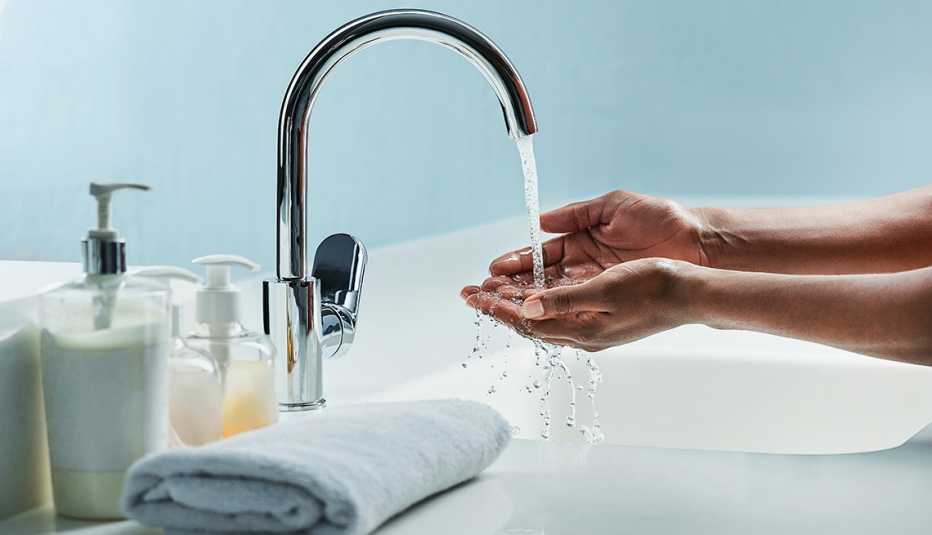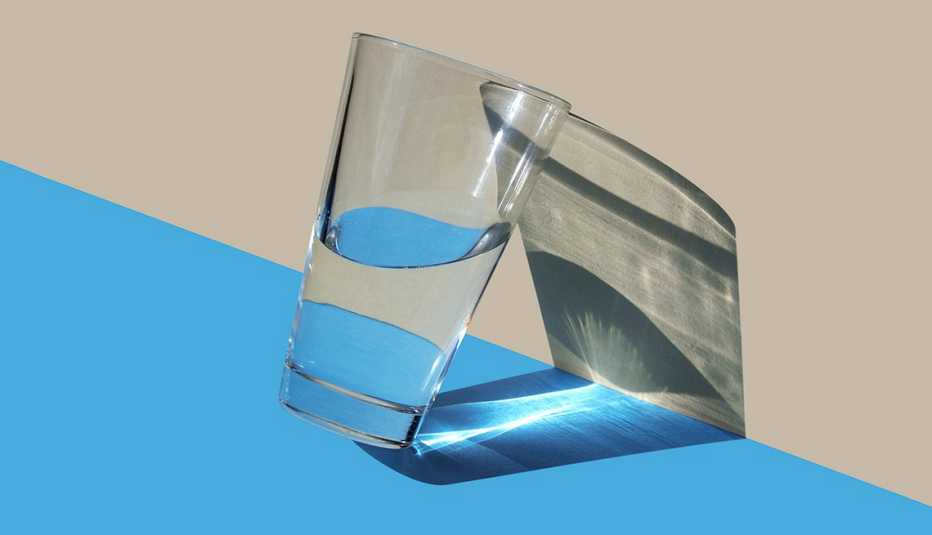Staying Fit


News flash: The words “antiaging” and “look younger” have mostly been banished by the world of beauty marketing. And for good reason: The notion that the goal of an older person is to look many years “younger” than their age is outdated and insulting. Today, older women AND men have a more realistic and compelling goal when it comes to their appearance: to simply look (and feel) healthy, well-rested, fresh and energized. Put simply, looking healthy and happy is the new beautiful. No single breakthrough brand, miracle ingredient or 14-step regimen of products can deliver that. But how to get there? What of the old products and techniques still apply?
Alas, there is no one-size-fits-all solution for mature skin for two good reasons. First, the genetic nature of our grownup complexions differs just as it does with our hair and bodies. Second, our skin has gone through a unique life journey, with its share of challenges (sun damage, smoking, dryness, for example) and positives (good diet, fitness, ongoing care).


AARP Membership— $12 for your first year when you sign up for Automatic Renewal
Get instant access to members-only products and hundreds of discounts, a free second membership, and a subscription to AARP the Magazine.
To help, here are 22 easy and affordable tips to keep you healthy, happy and, in turn, beautiful. Test a few that apply to you, and if you like the results, try turning them into habits. You’ll soon find that adding a little beauty to your day doesn’t require countless hours in front of the mirror or products that cost hundreds of dollars.


HEALTHY SKIN
1. Grab a glass of water ...
It’s the easiest beauty tip, and one of the best. Drinking lots of water may improve your skin’s natural elasticity and suppleness, which can help plump out wrinkles and give you a more rested look. It also can promote nail growth and reduce hair loss. After the age of 50, we’re more susceptible to dehydration because the ability to recognize thirst decreases and our kidneys lose some of their precision in regulating the body’s water supply. The general rule of thumb has been eight glasses a day but some recommendations may have you drinking more. For instance, one way to calculate how much water you need is to take half your body weight and drink at least that amount in ounces each day. For instance, if you weigh 150 pounds you should be drinking a little more than 9 cups of water a day. There are a lot of online water calculators available, as well. If you’re not in the habit, drinking a lot of water a day can seem daunting, so carry a refillable bottle with you and find a way to enjoy it. Some prefer lots of ice, others add cucumber, mint leaves or berries to give it a flavor boost, some prefer room-temperature tap.
2. … and run a humidifier, or two
You’re drinking more water, now add moisture to the air for an even better result. Our skin’s water barrier function becomes less effective as we get older, which hinders our skin’s ability to maintain moisture, says dermatologist Joseph Jorizzo of Wake Forest School of Medicine and Weill Cornell Medicine. “In the winter, when the humidity goes from 50 percent in a home to 3 percent, considerable dryness occurs and it’s very easy for dry skin to convert to irritable skin eczema, which is a magnet for staph germs,” explains Jorizzo. Your goal: keep the rooms you frequent at a humidity level of 40 to 60 percent.
3. Block UV rays from doing more damage
Dermatologists insist on sunscreen as the vital everyday health and beauty product. Note that we didn’t say to not go in the sun; the growing consensus is that older people should still get some daily sun on their protected skin in order to get the vitamin D needed. Aim to get your daily sun before 10 a.m. or after 4 p.m. — check the UV index on a weather app or website to avoid intense midday sun and getting even the slightest amount of burn. Sunscreens have come a long way in not feeling greasy and gloppy. Applying daily — and reapplying when needed — will help prevent skin cancer; limit freckling, sun spots and wrinkling from sun exposure; and prevent skin from drying out. There are two types of sunscreens: A physical sunscreen with zinc oxide or titanium dioxide (aka mineral or natural sunscreen) blocks UVA/UVB rays and deflects them; a chemical sunscreen (with ingredients like oxybenzone, octinoxate, octisalate and avobenzone) absorbs rays like a sponge. Jorizzo recommends using two sunscreens: one for your face, another for your body. “Body sunscreens have molecules that enhance their sustentivity, which prevent them from being washed off by water, but facial skin often doesn’t like that Teflon-like coat, making facial sunscreens very useful,” he explains. Note that those for your face often need to be applied more often (check your sunscreen’s label for specific timings). All of your sunscreens should have an SPF of at least 30. And don’t forget those commonly overlooked areas: lips, ears and scalp. Tip: The Food and Drug Administration (FDA) requires that sunscreens remain at their original strength for three years, so keep an eye on the expiration date.
4. Wash gently ...
Exfoliation is essential to remove or dissolve dead cells that linger on the surface of the skin, giving it a dull, dry look. But beware of facial scrubs with harsh particles, extra-zealous polishing tools and high-power at-home peels. “Scrubbing excessively and using wash clothes and loofas can strip your skin of its natural barrier, putting you more at risk of developing eczema,” says dermatologist Raman Madan of New York’s Northwell Health. This is particularly true for mature skin, which tends to be thinner, drier and more fragile. “Loofas and wash clothes are not only irritating but can start to harbor bacteria,” adds Madan, who recommends using your hands instead. Also avoid overheating your skin. Baylor College of Medicine reports that hot bath or shower water can also lead to excessively dry skin and eczema. Lukewarm water — typically 98.6 degrees — is recommended.
5. … and exfoliate delicately
Stay away from harsh, store-bought facial scrubs and trendy DIY options like using coffee grounds. Using abrasive scrubs, like those with crushed walnut shells, may feel like they’re getting the job done but instead may create microscopic tears in your skin, which expose it to infections and irritation. (Not to mention putting coffee grounds down the sink can cause an expensive plumbing headache.) Instead use products that contain alpha hydroxy acids (AHA), which include glycolic, lactic and citric acids, or beta hydroxy acids (BHA) — also known as salicylic acid, which exfoliate the skin more gently. “Scrubs are too harsh on the skin,” says YouTuber Hot & Flashy Angie, who creates beauty tutorials for women over 50. “But the latest formulations of chemical-exfoliating serums are gentle and hydrating, removing dead cells to reveal younger, more glowy looking skin.” Angie’s favorite products are: The Ordinary Lactic Acid 10% + HA serum for daily use, Pixi Glow Tonic for daily use, and Drunk Elephant T.L.C. Sukari BabyFacial for weekly use.
6. Find the best type of moisturizer for you
And use a lot of it, advises Madan. Extra hydration is needed not only to combat wrinkles but also, more importantly, to help prevent microscopic skin tears. “There are two key ingredients that you can’t go wrong with,” says dermatologist Shilpi Khetarpal of the Cleveland Clinic: ceramide to “really restore the skin’s water barrier, which maintains hydration”; and hyaluronic acid (HA), to “plump and hydrate the skin.” Both ceramides and HAs are naturally occurring substances found in our skin, but we lose both over time as we age.
7. Get right with retinoids
There are a lot of topical options that will boost skin health, but vitamin A, also known as a retinoid, is one of the most powerful. It’s best applied at night. “Nighttime is where we can reverse some signs of aging,” says Khetarpal, who recommends using a retinoid cream to stimulate collagen and turn over skin cells. “The over-the-counter version is called retinol, which is good for those with more sensitive skin, and the prescription version is tretinoin (like Retin-A), for those with normal or combination skin,” she says, noting that tretinoin is the only FDA-approved topical for fine lines and wrinkles. For either, use only a pea-size amount and start by applying one to two times per week, slowly increasing the usage until your skin gets used to it. Even over-the-counter retinols are powerful. Redness is always a red flag that there’s inflammation — not great for most skin, but especially for those who have rosacea or a history of allergic reactions.




































































More AARP Smart Guides
Make Daily Heart-Smart Choices
Treat your ticker right morning, noon and night
Manage Seasonal Allergies
Achoo! How to understand and treat your symptoms
Care for Your Home Appliances
Be proactive and protect your wallet